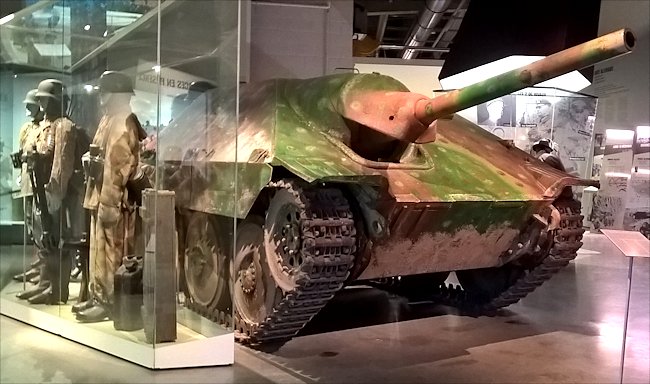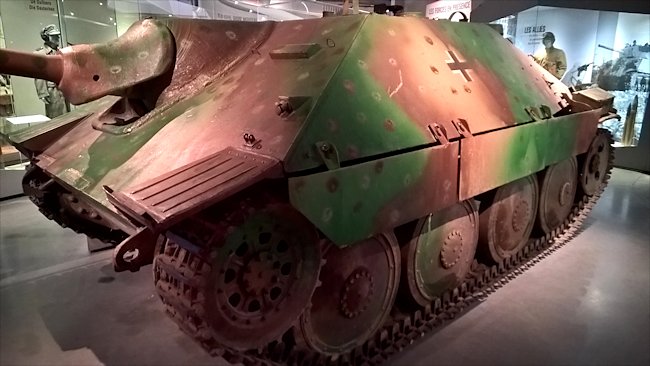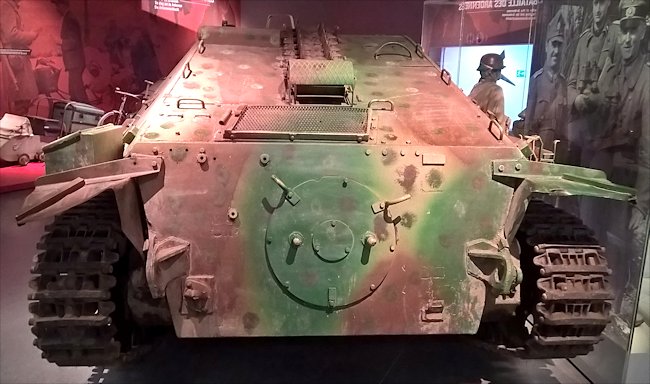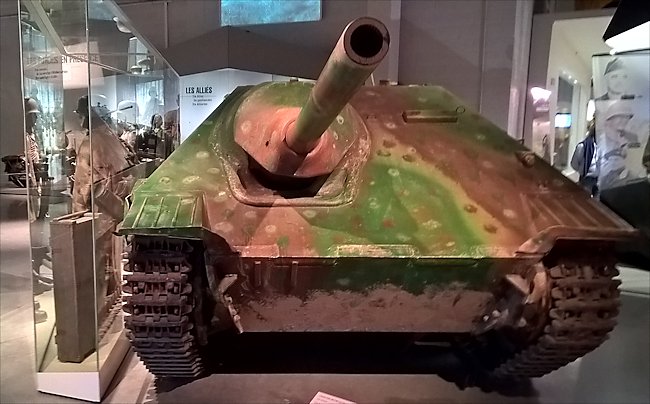Bastogne Jagdpanzer 38(t) Hetzer G-13
This Surviving Jagdpanzer 38(t) Hetzer G-13 tank destroyer can be seen at the Bastogne Historical Center war museum in Belgium. It was built after WW2 finished for the Swiss Army and is known as a G-13 Hetzer.

Jagdpanzer 38(t) Hetzer G-13 tank destroyer at the Bastogne Historical Center War Museum in Belgium
Location
The Bastogne War Museum can be found at 5 Colline du Mardasson just north east outside Bastogne city centre. It is open at 9.30 am and close at 6pm (last entry 4pm) all week except Monday when the Museum is closed. It is also closed during January. In July and August it is open for an extra hour until 7pm (last entry 5pm). It is next to the star shaped American Liberators Memorial also known as the Mardasson Memorial. It honours the memory of American soldiers wounded or killed during World War II's Battle of the Bulge.
The Hetzer
One of the first Jagdpanzer 38(t) Hetzer tank destroyers was presented to Hitler on the occasion of his birthday on 20 April 1944. This new variation on the Panzer 38(t) chassis marked a radical shift from the conventional open topped self-propelled gun like the Marder III. The letter 'T' in brackets does not stand for tank as many people believe. It is an abbreviation for the German word for Czech which is Tschechisch.

The sloping armour on the Jagdpanzer 38(t) Hetzer G-13 tank destroyer gave the crew extra protection without an increase in weight.
The Hetzer, although designed to working tank hunting artillery battalions, was modeled on the tank destroyer assault guns armoured vehicle like the StuG III with their fully enclosed and armoured bodies. It was this reason that the Hetzer was classified as a Jagdpanzer rather than a Panzerjager.
Production of the Hetzer started at the Skoda works and BMM factory in Prague in May 1944, with the phase-out of the Marder III self-propelled gun. As the fully enclosed armoured body offered the crew far more personal protection, than the earlier tank hunters, it also led to very cramped conditions. One of the defects of fighting vehicles like the Marder III was its high profile, which made it an easy target.
The Hetzer had a very low profile, to help it hide and escape detection. Moving within the machine was quite difficult. The worst position was the drivers. If the tank was hit and caught fire, he had a nearly impossible job of trying to escape quickly.

The small round disc hatch at the rear of the Hetzer is where the crew inserted the engine crank handle to start it
Because of the low profile the gun had a restricted field of movement. Despite these restrictions the Hetzer became one of the most successful and frequently used vehicles in the last year of the war.
The Jagdpanzer 38(t) Hetzer was allocated to tank destroyer battalions and the assault gun companies assigned to infantry divisions. Only one such battalion, Panzer-Jager-Abteilung 741, was engaged in the Ardennes offensive of 1944, but ten infantry divisions had one company at least partly equipped with Hetzer tank destroyers.

Jagdpanzer 38(t) Hetzer G-13 tank destroyer was armed with a powerful 75mm gun.
Battle of the Bulge books

